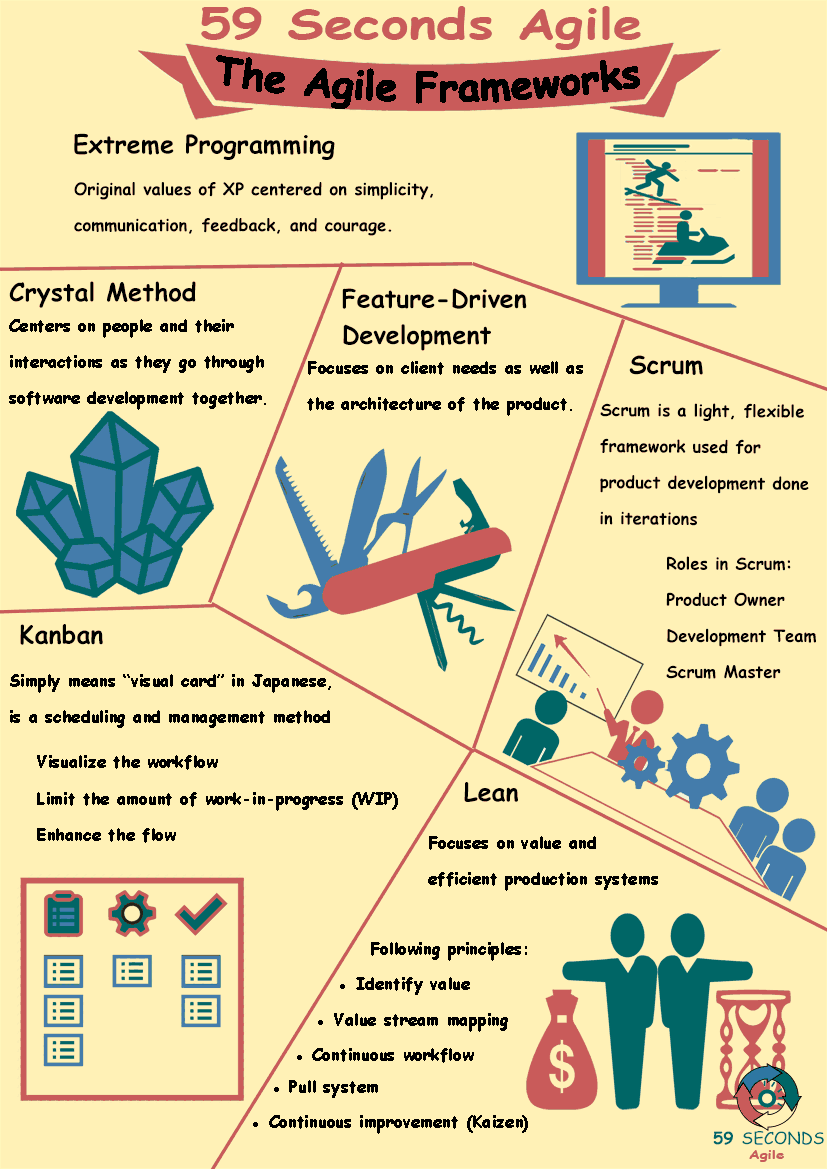Scrum Projects
A 59 Seconds Agile Training Video
Continue to Next Section
Scrum Projects
A 59 Seconds Agile Article
This article provides an ‘Introduction to Scrum Projects’ and looks to discuss the metrics used for measuring project progress.
Scrum Projects
In summary, the primary way to measure progress is a working software. Delivering a software at the end of the project cycle that doesn’t work is just a waste of resources and time of the company and customers.
Following the incremental process of measuring progress, will ensure that project teams deliver working software that meets the need of the customer, rather than just delivering based on specifications and schedule. As we end this presentation, note the following:
– Working software is defined as tested software that delivers value to the end user.
The working software is presented to the team during Sprint Review. The fundamental measure of progress is measuring things that are finished. The Project team and end-user must jointly agree on the functionality and the point when it is finished.
A software product is considered finished when it is successfully tested and delivered to those who will use it.
-Progress is measured, during the sprint, by plotting the work to be done in a burn down chart during Sprint Planning, and reviewed and updated during the Daily Scrum.
When measuring progress of your projects think of these 3 questions:
-Are you building the right product that end-users can use?
– Are the end-users using or playing with your incremental deliveries and sharing their feedback?
– Is the user feedback considered and incorporated at a sustainable pace?
Continue Reading —> Next
The Agile Development Frameworks
A 59 Seconds Agile Video Animation
Continue Reading —> Next
User Stories Applied
A 59 Seconds Agile Book Review
User Stories Applied by Mike Cohn is one of our favourite books on Agile User Stories. The book starts with an overview into user stories, and details what a user story is and the different aspects of them. He then discusses how to go about writing a user story, and provides details of the INVEST criteria that can be used to determine if the story is meeting all of its objectives. Next Mike gives an in depth discussion of who user stories are written for and where to begin when gathering the details for them. The book then discusses acceptance testing user stories, including how to go about specifying these criteria and the responsibilities of the development team and customers during this process.
Continue Reading —> Next
The Agile Frameworks
A 59 Seconds Agile Infographic

Continue Reading —> Next
Agile Scrum Master Training Course
Our Favourite Agile Books
We found these books great for finding out more information on Agile Scrum:
Continue Reading —> Next


